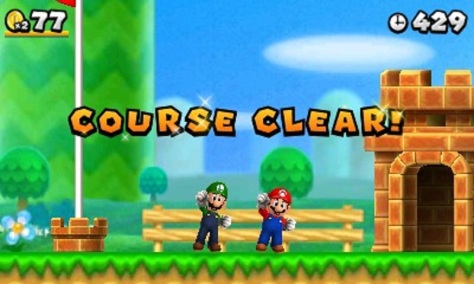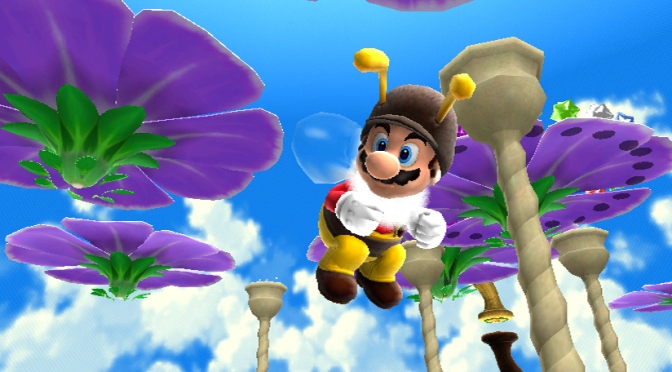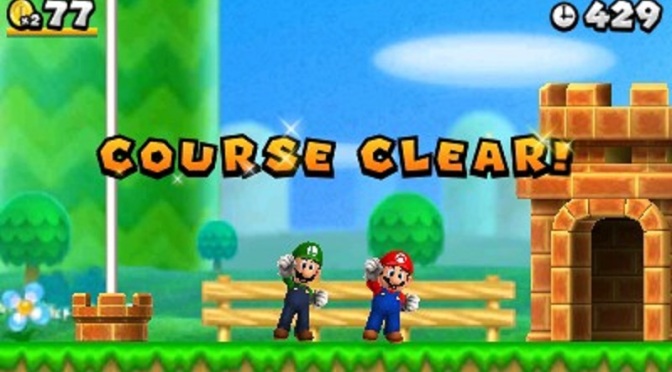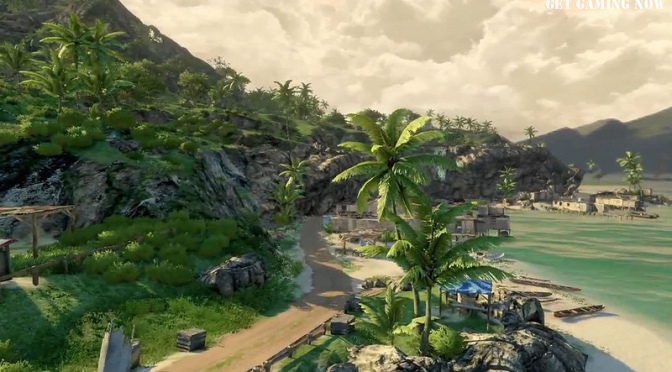All posts by Sam Leung
Community Post: Mario, the Great Peacemaker
-

Screenshot by Flickr User: apastor85 - Ah Mario, who doesn’t love you? It’s the one franchise that most gamers and even non-gamers can agree on. Its bright and cartoony graphics, simple controls, lack of any real plot and imaginative and fun characters make most Mario games unintimidating and very accessible for more casual gamers. At the same time, the depth of the levels, wealth of secrets and difficult gameplay at higher levels make it similarly popular with well seasoned gamers. For those of us who have been into gaming for a while, Mario represents a simpler time in games and brings to mind many of our most treasured gaming experiences of our youth. It’s easy to see why Mario remains a much loved franchise and has stuck around much longer than most. And the quality of titles hasn’t really waned. The release of more Mario games is a constant that many of us Nintendo fans have come to rely on, like the sun setting every day. So out of all the Mario games ever made, it’s difficult to choose a few levels as my favourites (also because the specifics of many of the older games have faded from my memory over the years), but below are the 5 that have stuck in my mind after all this time. They may not be the best designed or the most influential, but they all hold a special place in my heart. Continue reading Community Post: Mario, the Great Peacemaker
Community Post: The most important thing

Note: This post is going to be a bit different from my normal opinion pieces. In fact, it’s not so much an opinion piece as a personal account of my experiences with coop games. In other words, it’s going to be a lot sappier and more personal than you might be used to from me!
In the last few years, I’ve played a lot of games. In fact, since I started freelancing and interning at games magazines and websites, I’ve found that I have little time for anything else these days. For better or worse, gaming has become an integral part of my life and much more than just a hobby to me. Consequently, I’ve thought a lot about what I look for in a game and my standard is probably much higher than when I was just playing them casually in my spare time. What I most look for in games these days are deep stories, incredible worlds and immersive gameplay. I find myself drawn to games like Far Cry 3 or BioShock Infinite, games that aren’t the easiest to just pick up and put down without getting invested in. Games like this are great, but what I realised was that In the midst of all that playing and analysing and searching for the next best gaming experience, I lost sight of part of the reason I got into gaming in the first place – to have fun. It took playing with other people to take me back to my roots, to remind me of why I love gaming so much. There’s a special magic to coop games that no other type of game has and I really believe everyone should share this kind of experience at least once with someone else.
Gaming with other people has often seemed like more of a hassle than it’s worth. You have to deal with other people’s play styles, competitiveness (because even in a coop game people find a way), differing levels of skill and sometimes, clashing personalities. I’ve seen friendships tested over games and heated words exchanged over as simple a game as New Super Mario Bros. I’ve generally preferred playing on my own, inside my own little bubble. Since I started playing games more regularly (when I was a teenager) gaming has always been a very personal experience for me. Back then it was purely a form of escapism. My favourite games from around that time were Knights of the Republic 1 & 2, the original Fable and Vampire: The Masquerade – Bloodlines. I was a massive RPG fan. I loved those detailed worlds, involved stories and being able to explore and interact with people in the game to my heart’s content. Since then, I’ve played all manner of games from many different genres, but RPGs will always have a special place in my heart.
However, it wasn’t always like this. There was a time when I was young that gaming was an exclusively coop experience or at least one shared with others. When I was a little cheeese toastie, I used to live above my cousin. They had an N64 and NES and I used to go downstairs to play games all the time. Though the memories are already hazy, the feeling it’s left with me has never really died. I think those times we spent together are still some of my favourite gaming memories to this day and is part of the reason that after so many years and so many things have happened in our lives, we’re still best friends. Obviously we shared a lot of other memories together and had fun in other ways too, but those early days of playing games together and trying to beat games together (like Chip n’ Dale Rescue Rangers) helped instil a lasting companionship and a sense of teamwork and togetherness that only grew stronger over time.
Then the gaming scene changed. Graphics got better, there was a higher standard of writing, characters and quests became more involved and games became more akin to interactive blockbusters than the little timewasters of the past. BioShock Infinite isn’t something I would pop in to play for fifteen minutes to half an hour. So, the second stage of my life in gaming life began and while it was in many ways a lot more fulfilling and exciting than gaming was when I was a kid, it was also a lot lonelier, at least for me.
It was only when I started having LAN parties again with friends that I began to rediscover the joy of including other people in your experience and of just slowing down and taking it easy sometimes. I remembered that gaming doesn’t need to be an intense experience all the time. It doesn’t always have to live up to your expectations or fulfil your gaming desires to be a game you enjoy playing. Sometimes, gaming can just be kicking back with your friends and playing a few rounds of New Super Mario Bros. or Left 4 Dead. Gaming together is also a way that I spend time with my boyfriend (the other Sam from our Minecraft videos). While some people might not think it’s the most romantic thing to do, finishing the coop campaign for Portal 2 with him are some of my fondest memories. Also, we’re clearly still doing the Minecraft videos and hopefully the fact that we love it and have fun shines through, because we are. Actually working together to build something is an amazing feeling and one that despite all our ribbing of each other, is something that strengthens us as a team. That sense of fun, companionship and easy going friendship came rushing back to me in moments like those. I started actively seeking these experiences more and more.
The games I found myself coming back to are coop games. PvP can be fun and most people have that competitive streak that makes winning all the sweeter, but coop forces you to work with other people. The sense of accomplishment I get from beating a level while working with other people is unparalleled. Sure, sometimes people still get competitive, especially when there’s scoring involved, but most of the time you have to depend on each other. Personally, I’ve found that I’ve learned a lot of important things along the way – how to be supportive, how to let things go when things don’t go your way, how to carry people, how to be carried, but most of all how to just let go and have fun.
Coop games reminded me of the most important thing – to have fun. It’s sad that there aren’t more coop games coming out at the moment, because I think they’re a central part of the gaming experience. In a world that’s becoming more and more competitive, as well as more isolated (in both games and real life), I think it’s important to find moments like these, moments that you can share with the people you care about, where you can just kick back and laugh and connect with other people. That power to bind people together I think is what makes coop games so special to me and if you haven’t included them in your life yet, I’d suggest finding a game to play online with a friend or better yet, picking up that phone and inviting him/her over right away.
Realism in games – a step in the wrong direction?

Hello my pretties! This week I’m writing on an issue that’s close to my heart – realism in games and the general trend in the games industry of making games that are more and more realistic. When it came out, everyone was gushing about Half Life 2‘s physics engine and the ability it gives you to manipulate objects or affect the environment in ways that closely mimic real life. With every new innovation in technology, we are brought closer and closer to games that not only look like real life, but actually behaves like it and contains people that seem as solid as you or I. If you aren’t convinced, just take a look at Quantic Dream’s impressive tech demo:
It’s incredible isn’t it? People love this kind of thing and it’s no wonder that developers are scrambling over themselves to provide it for them.
You might think that being a huge fan of immersive RPGs like the Mass Effect series, I would love realism in my games. I’m not denying that it has its place or that I am eagerly awaiting the day where virtual reality becomes more than a game and becomes almost like a second life. However, I believe that there’s more to games than that, that we can take the medium further and that this obsession with realistic graphics, physics engines and AI and so on will have a negative impact on the industry we love so much.

My main issue with the trend towards ever greater realism is that I think it hampers progress. There is, at the moment, a huge focus and expense paid for tech that will make the game look amazing, but often at the cost of the narrative and characters – LA Noire and Uncharted are only two examples of this for me. This focus also hinders creativity and the development of other ways of telling stories or enhancing gameplay. Instead game studios are restricted by the narrow limits of gravity, realistic facial expressions, lifelike movements and getting rid of that dreaded deadness behind the eyes that 3D models often have. Major developers don’t experiment much with what has worked for them so many times. It’s understandable, considering the sway that hyper-realistic games like Call of Duty have had on the gaming community. They seem to leave the real innovation to indie developers like Blendo Games of Thirty Flights of Loving, which I reviewed here. What that game achieved, which so many modern games shy away from, is that it found a new way to tell a story. No words were required, there was no real linearity of time and it took your conception of what a game is and turned it inside out. Whether you like games like that or not, the fact that games like that are made, I believe is a good thing for video games and for storytelling generally, whether it’s movies or books or games. Reality hampers the imagination and limits the tools at your disposal in creating a work of art.
What developers fail to realise is that realism and immersion, although they often go hand-in-hand, do not necessarily lead on from each other. I love the unique cartoony animation style of Borderlands 2 and the game wouldn’t have been what it was without it. It’s also not realistic in any sense of the word, but it’s no less immersive as a game. Pandora was just a different kind of world to ours. I think that the trick is to build a world so full and rich that you’re transported there immediately and can’t help but be immersed in it. You don’t need realism to leave the real world behind you. How many hours did you spend on Mario and Sonic when you were younger and did you really think about the outside world during that time or were you not fully involved in that universe and its characters? True, you were probably younger and had a boundless imagination, but I don’t think that’s all there is to it. I obviously don’t need to remind you how unpolished those games look compared to the AAA titles of this day and age. The things we could achieve with the technology we have now! I’d like to believe that given the option, many people, even if its not the majority, would choose a game with an incredible story and gameplay over a game that has nothing going for it except shiny, pretty graphics. I feel that in modern day society we have been conditioned to believe that art is only beautiful if it closely resembles life and to me that’s a tragedy, especially considering what we have at our fingertips. You can see this happening everywhere from Hollywood movies to the proliferation of reality TV shows and even in pop music. In my parents’ day, songs told stories, whether personal or fictional. Now, not all, but much of pop music focuses on slice-of-life situations or specific inane aspects of people’s lives. Creators want you to relate to their game, TV show, song or movie and yet what they don’t realise is that all of the effort put into mirroring our regular lives isn’t necessary. In the days before all of this technology, before TVs and radios, people used to tell stories by word of mouth with nothing to aid them in their storytelling other than their talent and their own imagination. Many of these stories still live on today.
Lastly, a slightly more minor, but still important issue is centred around the uncanny valley effect, which states that as a robot or animated model’s similarity to humans increases, empathy also increases until there comes a point when the likeness is pretty close, but not 100% where we feel instead feel revulsion. As has been pointed out before, there are many creepy examples of this and you can probably think of a few yourself. My point is that sometimes when attempts to create extremely realistic characters and environments are almost achieved, but inevitably fall short (as we simply don’t have the tech at the moment to create animation that is indistinguishable from the real thing) what happens is actually the opposite of the desired effect. Rather than feel completely immersed, because the setting feels so familiar and the people look so much like us, we end up, sometimes unconsciously, noting the things that make that world false. LA Noire, for instance, uses advanced tech to very closely imitate the facial expressions of the actors to the point where you can tell if they’re lying (indeed, that’s the point of the game). The result is impressive. However, there is no chance that I would look at a screenshot from the game and think it was a real picture. It’s not an easy thing to pin down, as I think humans, to an extent, automatically identify those of the same species as us in ways that are subconscious, but there’s something about the deadness of the eyes, the slight stiffness of the movements and the lack of subtle nuances of the face that humans are capable of. Not to mention that the environment just looks kind of flat by comparison. Rather than feeling like I was really a cop in LA in 1947, I was even more aware of all the slight differences between the world of LA Noire and real life. The more they tried to convince me that this was real, the more I noticed that the people just weren’t moving right and that Cole Phelps, star cop, wielded a gun like it was a live fish he was wrestling. Countless other games are guilty of this. How many games have you played with amazing graphics where you couldn’t jump? It’s little things like that that actually take away from the realism of games for me, that actually makes games less immersive. I’m not saying that developers should just give up, but that they should perhaps try a little less hard to make everything perfect and focus more on creating a fully-realised world that works within its own boundaries.
In the end, I guess what I really want is more variety, more imagination, games that blow my mind and overwhelm more senses than just my eyes. I want developers to take realism less seriously and to expand their imaginative horizons and use the amazing tools at their disposal for more than just making faces twitch in just the right way. I want a revolution of what games actually are, of what they can do!
That’s just me anyway, what do you guys think?
[This article was originally posted on CheeeseToastieandVideoGames February 25, 2013]
Can games be too open world?

[This article was originally posted on CheeeseToastieandVideoGames 22nd April 2013]
Note: I’m using ‘open world’ in a very broad sense and discuss games that are not really open world at all (like Mass Effect and LA Noire) and are merely non-linear or offer a degree of exploration. The reason for this is that my main focus here is to look at why these elements are becoming so popular in the games industry over strict linearity, so the distinction between true open world games and those with open world elements isn’t particularly important for my purposes.
If you follow my blog at all, you probably know that I love me some of that open world action. In the last decade in particular, the number of open world games has been on the rise and some of them have been incredible. However, it does seem that more and more these days, developers are turning to an open world or sandbox structure and though I wouldn’t necessarily say it’s become the norm, it’s certainly getting that way. Consider how many recent AAA titles in the past few years have been open world games. There’s Red Dead Redemption, any of the GTA games, Skyrim, the new Tomb Raider and Far Cry 3 to name just a few. Old franchises that weren’t previously open world have switched over to this structure. Sequels of franchises that were previously open world in a more limited sense have been lauded as bigger and better with each new sequel, like Assassin’s Creed. Developers have bragged about the size of the maps as if that somehow means the game is now better. To many, it seems that having increasingly expansive worlds has somehow become linked with quality and innovation in a game. My question is, can the narrative or any other element of a game suffer from, in essence, being too open world and expansive? The short answer is, in my opinion, a resounding yes. To be clear, my point isn’t that developers should stop making open world games or that they shouldn’t keep trying to push the limits of how expansive a game can be, because if done well, these types of games often are innovative, entertaining, immersive, creative and can enhance both story and gameplay. If done incorrectly however, the results can be at best boring and at worst game-breaking. To that end, I do think that developers need to be a little more cautious in deciding whether a game should be open world or not as it doesn’t necessarily mean it will automatically make it a better game and that they should also be careful in balancing that openness with other elements that they think are important.

Firstly, open world does not equal more fun. That seems to be the premise for developers jumping on the open world bandwagon and I think that’s simply not true. I’m not talking about the fact that massive maps can often be quite daunting (especially for completionists), because that’s something you can get over once you become more absorbed in the wold. The truth is, many open world games can be quite boring, especially those filled with travelling and fetch quests. I’m sure most of you have played open world games like Assassin’s Creed where you get to take full advantage of the amazing scenery on your long rides into the next area. The problem with this is that it gets old pretty quickly. There’s only so much time I can spend watching my character ride around on a horse, no more how heroically they do it. Of course, many games get around this issue by introducing fast travel, but if everything’s so far apart (and many games do this) that you have to constantly fast travel, it begs the question, what’s the point of all having this wonderful expansive world? It’s not like you’re seeing it much. There are also games that feature huge maps, but have no fast travel or still require you to travel excruciatingly long distances and have mind-numbingly boring ways of getting from Point A to Point B, which is even worse. It’s true that it’s difficult to make something as repetitive as driving or riding fun and I can only think of a few games that have done it really well, Far Cry 3 being one. The problem then is not simply with making the game open world, but a problem of often making games too massive in size without actually thinking about how a player is actually going to traverse that territory in a fun way and still takes advantage of all those areas you’ve created.
Having an unbelievable and frankly, daunting number of collectibles and loot items is also a common feature of open world games that can often actually make the experience more boring than fun. I have nothing against collecting or looting items as such. It can be a fun addition to a game that takes advantage of an expansive world and adds optional content that gives you more fun things to do. However, done wrong, it can end up feeling like collecting just for the sake of collecting and a repetitive exercise that doesn’t really add anything significant to the game other than more hours logged. In games like Far Cry 3, it doesn’t bother me too much, because it’s completely optional and you wouldn’t really miss out on anything from not collecting everything, other than a few extra weapons, for instance. Also games that manage to work the collectibles into the main story work well, because collecting becomes less of a pointless, repetitive exercise. What does irritate me is when the collectibles are artificially made an important element of the game, forcing you traverse the whole map. Sure you don’t have to collect all the items, but then you would be missing out. That’s how I felt with the voxophones in BioShock Infinite. They didn’t just tell you back story, they actually told you crucial parts of the main story or least information that I doubt anyone would voluntarily choose to miss. It feels like I’m being punished for not exploring, which should surely be up to the player. Adding in as much exploration as possible and padding the game with tons of extra items and loot doesn’t automatically make a game fun. How to implement exploration is just as important as deciding to include it in the first place and that’s something I feel developers sometimes forget.
Secondly, I don’t think that all genres or stories are inherently suited to being open world. Not all first-person shooters, for instance, would benefit from the open world format for instance. Much as I adore Mass Effect (that’s probably one of the biggest understatements I have ever made right there), I do feel that the first two games suffered from attempting to balance action and exploration and as a result fell a bit short on both at times. It’s a difficult line to walk and I’m not suggesting that they should have cut out either (God no!) My point is just that it is difficult to balance exploration with other elements of a game and that thought needs to be put into how to do that or whether it would enhance the experience at all. There are many games where the open world elements can feel completely superfluous, like LA Noire. Driving around and completing little side quest frankly felt like a chore and took away from the important parts of the game. Rather than add to your experience, those extra elements just feels pointless and you end up either just ignoring it or just grinding through it. There’s not only no need to add in open-world elements into a game, it can end up just diluting what would otherwise have been a fantastic experience on its own.
Thirdly, games that have huge open worlds can sometimes suffer visually as well, with each area having have less detail than those of more linear games or those with smaller maps. For some games it doesn’t matter, for instance sandbox games such as Minecraft or Dwarf Fortress. The point is to have an extremely expansive world, which you can control or manipulate and the graphics are deliberately basic for that reason. However, the bigger the world the more likely there are to be horrendous glitches. Red Dead Redemption, for instance, has some absolutely hilarious ones (check it out on Youtube). Also there’s often less to do than it first appears. In many open world or non-linear games there are big open spaces that you have to travel between or areas for exploration, but there’s actually very little in them. It’s mainly an illusion of space and all the items and quests could have been packed into a much smaller area, rather than forcing you to traverse the map just to collect one little thing. Bigger is definitely not better and if you have a huge map, but with very little actually going on in its various parts, then personally I would prefer to play a game with more detail packed into a smaller map. That doesn’t mean that open-world games are inherently less detailed at all. Batman: Arkham Asylum and Far Cry 3 did very well at packing tons of detail into fairly large areas. It’s all about balance and not simply expanding for the sake of expanding.
Lastly and most importantly to me is that the story can suffer for adding in open world elements for no reason and the result is that it feels less like a less coherent world. Too many side quests can detract from the apparent urgency of the main plot and make it more difficult to suspend disbelief at times and can even lead to narrative inconsistencies. I’m sure everyone’s come across a point in an open world or non-linear game where a character tells you ‘quick! Get to the next area and talk to so and so or we’ll all die! We’re counting on you!’ Instead of taking this to heart, your character wanders around for the next three hours collecting things and talking to NPCs and ‘exploring’. It can lead to a feeling of disconnect when you do continue with the main mission, only for everyone to act like you weren’t just a complete douchebag for abandoning them in their time of need. Also, running around talking to tons of characters can mean that the characters you do meet are less developed. The benefit of more linear games is that it’s easier to follow specific characters around and there’s more time dedicated to getting to know them. Here there is a major difference between a non-linear game and a truly open world game. The more open world, the more these dangers exist. Sometimes having millions of possibilities can feel more like a lack of direction and that can take away from the main narrative. It’s not a surprise that many games with the best stories are linear or at least more linear than a fully open world or sandbox game, although of course not exclusively. As many point out, there’s absolutely nothing wrong with a story being linear. In fact linear stories are tried and true. When was the last time you read a non-linear book? It’s all about finding that balance and figuring out whether your story would benefit from your game being non-linear. Personally, I don’t think games should be open world unless there’s a real reason to do so; in other words, if it would really further the plot or if the exploration aspect of the game is simply more important.
There seems to be an obsession with open world games or at least with having some open world elements. Personally, I think developers need to be more cautious and I don’t like the trend of simply making games bigger or having more options simply for the sake of it. Of course, in the end it comes down to enjoyment and for some people, exploration is more important. If you’re enjoying yourself, that’s the important thing and there many games that incorporate or focus on the exploration aspect of a game and do it very well and they are no less important than games that depend on its tightly told narrative. Those two types of games are also not mutually exclusive. At the same time, I think it’ll be a while before we see a truly narratively strong and truly open world game. That doesn’t mean we should give up, but there does need to be more awareness that there is a balancing act going on or at least that there needs to be a decision for sacrifice. I welcome more open world games, but I also think it’s a pit trap that many a good game could fall into, never to return.





